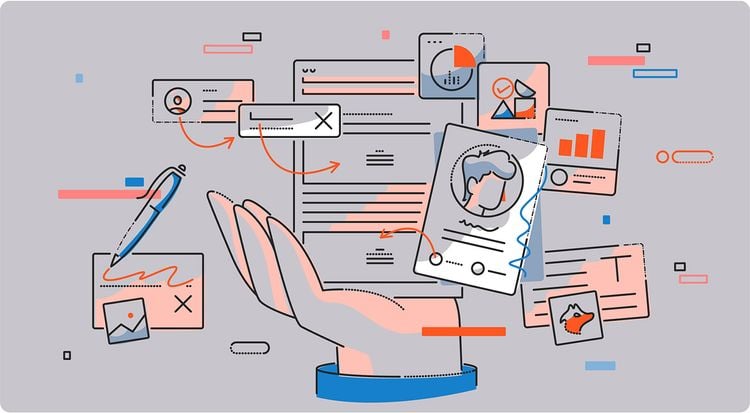6 Personalization Examples for Cold Email Outreach

Do you know that using multiple personalization fields in an email can improve your reply rate by as much as 142%? That's the effect of investing extra time to hyper-personalize your emails.
It's like walking into a store and seeing your name on a Coke bottle. And not only that, but also seeing the mascot of your alma mater & pictures of your hometown.
You'll be inclined to buy it just for the thrill of all these common touchpoints. Personalized emails work the same way.
Personalization is one of the most powerful ways to get prospects to respond to your emails. It will help you stand out from all the cold emails in the recipient’s inbox to be one of the 8.5% of cold emails that receive a response in today’s world.
In this blog post, we'll look at examples of personalization you can use to get better results from your cold email outreach.
How does personalization help with outreach
Sales experts agree that personalization is the holy grail for cold outreach and the difference between a flopped email campaign and a successful one. It’s been shown to:
Increase open and reply rates
Are you more likely to reply to an email that's a generic one-size-fits-all or one with personality that shows the sender reaching out to you has done their homework? If they had to choose, most people would rather reply to the second one.
Similarly, a prospect is more likely to open an email if it feels relevant to them. This is why personalization is key in cold emailing. In fact, studies show that personalized subject lines can increase open rates by 50%.
Improve email deliverability
Using email templates is a great starting point to ideate the body and structure of your cold emails.
But, if you make no variation and use identical copy every time, email service providers will mark your emails as spam, preventing your emails from entering prospects’ inboxes.
A personalized email has a better chance of staying out of the spam folder. This is because your prospects are more likely to engage with your emails, showing email service providers that you're a trustworthy sender.
Improve conversions
The more prospects you can entice to open your emails, the higher your chance of converting some of them into paying customers.
Studies show that email is 40 times more effective at securing customers than selling on social media.
By going the extra step to add personalization, your emails allow your prospect to relate to you on a personal level, which makes them more likely to buy from you.
How much personalization should you use in your cold emails?
Cold email campaigns are generally carried out in bulk, so it isn't practical to personalize every single email. Just imagine how much time and effort you'd have to put into personalizing emails for over 100 prospects daily.
Yikes.
While it’s important to spend some time and segment your audience, not every prospect needs the same level of attention. Prioritize and segment your emails based on how much potential revenue they'll bring you.
Lead scoring, for instance, can help you determine the degree of personalization you should give a prospect. Ideally, the higher the degree of personalization, the better.
But, as we explained, this approach isn't practical in the long run. Measure the potential value a prospect has for your business as well as the likelihood of a conversion with a lead scoring matrix, and focus your attention on those with highest scores.
Hyper-personalization examples for outreach
Hyper-personalized emails are the kind you write after conducting in-depth research on your prospects. These aren't simply template-based, and usually have some snippets of text with specific information about your prospect.
Here are some ways you can use hyper-personalization in your email outreach:
1. Subject line
Your brain instinctively responds when it hears or sees any information related to you. It's why personalized subject lines stand out in a crowded inbox.
Include your prospect's name in the cold email subject line, along with some information showing you know who they are and that you have a reason for contacting them.
Write subject lines that tell them the email is for and about them. It’ll show your prospect that you've done your research and make a strong first impression.
Personalize around their recent activity on social media or mention an event, conference, or workshop happening in their local area. Here are a few examples:
- {First name}, your comment on {post} was insightful
- Looking forward to meeting you at {conference name}, {First name}
- {First name}, congrats on your promotion!
- Loved your {LinkedIn/Twitter} post on {idea}
- Do you remember me from {event name}?
Another powerful way to personalize the subject line is by including a mutual acquaintance. Of course, make sure you actually get permission from him or her.
- Via {acquaintance name}
- Referred by {acquaintance name}
- {acquaintance name} thought you’d be interested
2. Image, GIFs, and Videos
Using images and other kinds of media is an excellent way to attract prospects’ attention. People remember 20% of what they read, but 80% of what they see because the human brain processes visuals better than written language.
That’s why having attention-grabbing images in your email is a no-brainer.
Adding visuals to your emails makes communication effective by giving them that much-needed human touch. Include GIFs that demonstrate a concept you're referring to, a video from your company addressing the prospect, or even a screenshot of their website.
3. Pain points
Addressing a pain point specific to a prospect is one of the most powerful ways of hyper-personalizing a cold email.
These emails need a lot of research and preparation to ensure the message is tailored to the prospect, though. Considering the amount of effort, we recommend using these for prospects with high-value deals.
Highlight factors like their company size, the prospect's role in the company, and recent developments within the company in your email copy. Briefly discuss the pain point you want to address, and then tell them how you can fix their problem.
Here’s an example from Hunter Templates:
This cold email template touches on the challenges the prospect is likely to face and allows multiple personalization fields to create points of common interest.
4. Common ground
Having a common ground is a connection between you and the prospect—something that helps you communicate on a human level.
When researching a prospect, try to find relevant information the recipient can relate to. For example, you might have visited the same cities, attended the same university, or have a mutual acquaintance.
If you have some common ground with the prospect, you can use this to create an ice-breaker that will help grab your prospect’s attention and allow you to develop rapport more easily.
As the prospect will quickly identify and connect with you, your cold email won't feel "cold'' anymore.
Here’s an example:
This cold email mentions a mutual contact right off the bat. This way, the prospect no longer sees the sender as a stranger.
The copy then focuses on building trust gradually from this point by briefly touching on how they helped the mutual contact and how it relates to the role the contact is hiring for.
5. Follow-up examples
If follow-up emails are scary to you, you aren't alone. It's human instinct to hesitate to send another email when there's no response from the prospect.
You don't want to be a bother, but sending follow-up emails is an integral part of cold outreach. Research shows that sending 4-7 emails per campaign gets three times as many responses compared to campaigns with fewer follow-ups.
Personalize your follow-up emails as you did your initial email. Tell your prospect who you are and why you're contacting them.
Also, emphasize the pain point you're trying to solve for them. Close your email naturally, and include a call-to-action.
Here's a follow-up example from Hunter Templates that does this perfectly:
It provides several personalization fields and re-states some common points of interest. Also, it poses a low-effort question, which will subtly nudge the contact to reply to you.
6. Adding value
Another powerful aspect of a hyper-personalized email is adding immediate value to your cold email outreach.
Add a resource link or video that addresses the prospect’s pain point or include a case study that aligns with their goals. This way, they don't have to look far to see what you can do for them.
Here’s a great example:
The template above touches on facts from a case study that relates to the prospect’s goals. This approach works because it includes numbers and a link to the resource validating it, thereby providing value to the prospect.
How to research your prospects to personalize effectively
We discussed a few hyper-personalized examples you can use in your cold email campaigns. But how do you find the information you need to personalize effectively?
Here are a few tips:
1. Leverage LinkedIn
LinkedIn profiles are a goldmine of prospect information. You just need to know where to look.
- About section and Activity section – these areas reveal the richest information like who they are and updates or posts about the company
- Past organizations they've worked for
- Mutual connections
- Recommendations – reveals personal details such as their preferred name
- Posts — shows what they’re most interested in talking about
For example, this email references a LinkedIn post to establish common ground and pitch a guest post idea that would be relevant to the receiver and the company they worked for. The receiver had recently posted a complaint on LinkedIn about bad outreach tactics.
The idea is to be friendly and show that you care about their needs. This will make them more likely to respond to your email.
2. Read company blog & announcements
Company websites usually have a press or news section where they post announcements. You could also sign up for their newsletter to keep up to date with what they’re prioritizing. If they don't have either, look at their blog section for updates.
The following are a few pointers you can include in your cold email:
- Newly released features
- Recent hiring of a new team/head
- Closing of a round of funding
- Award nomination
3. Make sure you’re connecting with the right person
Personalization will only work if you're contacting the right person at the company. Here's how to identify this person:
- Check the website's team page or About page, which usually has the team information.
- Identify the team member with the most appropriate title for your cold outreach.
- Research this person on social media platforms to learn more about them.
- Use email finder tools like Hunter to get their email address.
- Ask existing or mutual connections to make an introduction.
4. Create an outreach persona
You need to know exactly who your prospects are before reaching out to them. To do this right, create an outreach persona (not too different from buyer personas) that lets you profile target customers by defining:
- The right prospect
- Organization size
- Job size
Follow this up by grouping them by similar job profiles, company size, priorities, and pain points. Then, craft your personalized content for each group.
Try different messages for different personas and use A/B testing to find out which emails resonate the most with your target audience.



 Send cold emails with Hunter
Send cold emails with Hunter